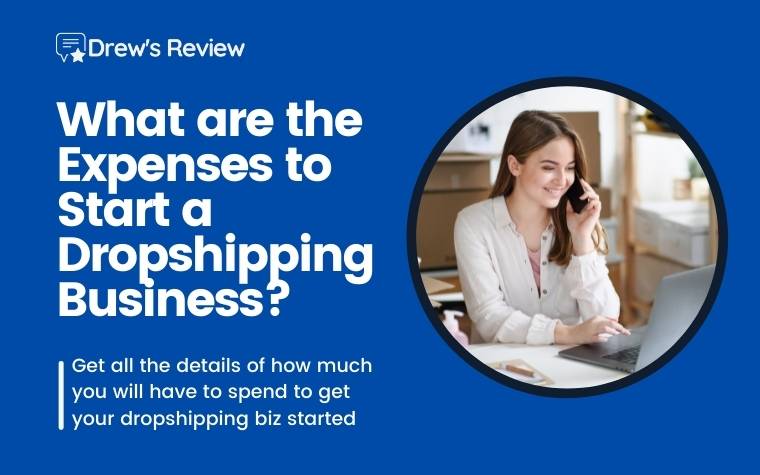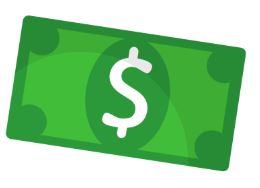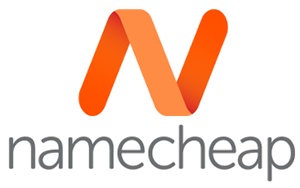
I've had a lot of my readers contact me to ask what are the common expenses incurred when starting a Shopify Dropshipping e-commerce store.
By the end of this article, you'll have a much better grasp on how to invest in your dropshipping business. Get practical tips and guidance that will make all the difference when it comes to making wise investments!
Since you asked what it really costs to run a dropshipping store on Shopify today, it’s worth noting: things have changed a lot since you might first heard “dropshipping for $0.” In 2025, rising advertising bids, premium app subscriptions and global shipping delays mean your budget needs to be sharper than ever.
For example:
- Shopify’s basic plan still starts at around $29/month, but hidden fees such as payment-processing, apps and premium themes can push your real cost much higher.
- Dropshipping is still very accessible, but recent breakdowns show startup frameworks starting from $150–$700 upfront, and monthly running costs often moving into the $150–$300+ range before you scale.
- Apps, themes and “must-have” tools are no longer optional extras—they’re now part of the baseline. If you skip them you risk falling behind, but if you pay for them you need to budget them.
In short: yes, you can launch a Shopify dropshipping store on a very low budget, but you should plan for realistic monthly running costs, variable expenses and contingencies. This article walks you through each of the common expenses (domain, plan, apps, ads, autoresponder, training) and reveals what many newer sellers overlook so you’ll build your budget with your eyes open.
Expense #1 - Domain Name
The first thing you will need is a domain name. Shopify gives you the option to have a subdomain as your URL and I strongly advise against this. Register a domain name yourself. The process is very easy.
Domains start at $8.88 for a .com domain. I strongly suggest a .com domain. If you have a brand already and can't find a .com, then the next two best ones would be .net or .org. I would not go with anything else than these three.
You will need to renew the domain name each year. I would suggest choosing the auto-renew option so you don't forget!
Expense #2 - Shopify Plan

At the time of this writing, there are 4 different plans to choose from. In the beginning you only need the "Basic Shopify" plan which is $29/mnth USD.
From my experience the next plan just dubbed as "Shopify" at $79 a month is only worth it when your store starts to grow and more sales are coming in.
With this plan the transaction fees are less, so you'll end up saving money.
You can get a free trial here for Shopify. You can also downgrade the plan if you choose any version that is greater before the trial ends.
Expense #3 - Apps
If you are installing one of the free themes from Shopify, you'll probably need to install some apps to customize your store. Free themes are very basic but will have all the functionality you need to begin. Once you start getting more advanced, you're going to want to automatically tweak your store to look like the more popular ones.
Some of the popular apps can range anywhere from $5 and up. There are some free apps available too, but most of the time they don't work too well and are just a gateway to a paid product.
Apps can add up in price, and when you consider most come with a monthly fee, you could be paying a lot over time.
How to Eliminate Monthly App Fees

The way to drop your monthly fees is to get a premium theme that includes the same functionality of apps within the theme.
A theme like Ecom Turbo is great as it incorporates most of the apps you'll ever need in the theme and never have to pay any monthly fees.
Most quality premium themes will have just about all the functions you need built in that you would normally have to pay for with an app.
When you are first starting out (which you probably are) you have two options.
1. Get your feet wet with a free theme and really learn your way around the Shopify Platform. Just get something up and start testing. Don't worry about apps for now. Once you are comfortable with the platform, you can choose to buy some apps or just get a premium theme.
2. The other option is just to spring for a premium theme right away. This way you will be learning on the same platform that you will be using well after launch and you'll never have to pay any monthly fees for apps
Expense #4 – Theme & Design: One-Time vs Recurring Costs
A lot of new dropshippers don’t realize your theme choice can make a big difference—not just in how your store looks, but in what it costs you over time.
Shopify gives you several free themes like Dawn and Craft, which are perfect for beginners. They’re fast, responsive, and give you a clean look right out of the box.
But if you want a more branded feel (or built-in conversion boosters like timers, upsells, or sticky ATC buttons), you might eventually want to upgrade to a premium theme.
- Free themes: $0 (great to start)
- Premium themes: $180 – $350 (one-time)
- Custom design work: $100 – $500+ if you hire freelancers on Fiverr or Upwork
💡 Pro Tip: Many premium themes already include features you’d normally pay monthly app fees for. So even though you’ll spend a few hundred up front, you’ll often save more long-term.
Expense #5 - Advertising
Although there are some free methods you could learn to advertise (if you get a good course) the bulk of your ependitures will come from ads. Typically most people start out with Facebook ads but now Google Ads are also becoming popular amongst drop shippers.
Some guru's may tell you that you can start with just 1 product, 1 ad and $5 a day. To tell you the truth guys, unless you're really lucky, you probably aren't going to have much success with that.
You should be testing at the very least 3-4 products a day. If you're not able to spend at least $5 - $20 a day in your ecom business, I would rather that you look to a different model, perhaps affiliate marketing using free methods or lower cost advertising.
Expense #6 – Product Testing & Sample Purchases
One of the smartest investments you can make early on is buying samples of your own products.
Why? Because the #1 reason new dropshippers get hit with refunds or bad reviews is quality or shipping surprises they never saw coming.
Ordering a sample lets you:
- Check packaging, materials, and sizing accuracy
- See how long shipping actually takes
- Take your own product photos or videos for ads
- Catch any supplier issues before customers do
Depending on your supplier, samples cost around $10–$50 each (including shipping).
💡 Pro Tip: Order from two different suppliers for the same item and compare. You’ll instantly see who’s faster and more reliable.
Expense #7 - Autoresponder

Every successful eCom store has an active email list that they market to time after time. A lot of new dropshippers ignore this and just focus on ads.
Don't do that! Get yourself set up with a way to collect emails and start mailing your list right away.
The good news is that you can start for free. So, the expense here is zero. The caveat is that you'll have to start paying once you reach a subscriber count of 2000. This autoresponder is called Mailchimp.
There are other options and in my opinion Get Response is superior.
Expense #8 - Training

If you have been excited by all the "guru's" on Youtube with their flashy cars and lifestyle and want that too - it's not going to happen if you don't know what you are doing.
The free training found online whether it's from Youtube or some other source is ok, but a lot of it is outdated and innacurate. Take free training for what it is with a grain of salt.
You therefore NEED to invest in training. The good news is that you don't need to spring $2495 for an eCom course like I did a few years ago.
Ecom Elites is the best course in my opinion and it's only $197 or $297 for the Ultimate version. This is paid once and you get lifetime updates.
I do a full review of eCom Elites that you should check out. I am a member as well and I take you inside the course to see what you get.
Expense #9 – Payment Gateways & Transaction Fees
Whether you use Shopify Payments or PayPal, you’ll pay a small fee on every sale. It’s the cost of doing business online—but it adds up fast when you start scaling.
Here’s a quick breakdown for 2025:
Shopify Payments: ~2.9% + $0.30 USD per order (slightly less on higher plans)
PayPal: ~3.4% + $0.30 per transaction
Alternative gateways: Stripe, Authorize.net etc. ~2.9% – 3.5% + $0.30
Currency conversion: ~1.5% – 2% if selling outside your country
💡 Pro Tip: If you’re seeing consistent sales volume, upgrading your Shopify plan often reduces these fees enough to offset the higher plan cost.
Expense #10 – Shipping, Duties & Returns Logistics
Even though you’re not storing products yourself, shipping is still part of your cost structure.
If your supplier ships from overseas (AliExpress, CJ Dropshipping, etc.), longer delivery times can lead to higher refund rates or lost sales. That’s a hidden cost.
Typical expenses to keep in mind:
International shipping fees: Often $3 – $10 per order (not always included in supplier price)
Duties / taxes: Customers may be charged on arrival (depending on country)
Reships / returns: Budget ~5% of sales to handle lost or damaged orders
Third-party fulfilment centres: $1 – $3 per pick/pack order if you ever store locally
💡 Pro Tip: When possible, choose suppliers that offer local or ePacket shipping—it shortens delivery times and reduces refund requests.
Hidden or Overlooked Expenses Most New Dropshippers Miss
Most new dropshippers think their only costs are Shopify, ads, and a domain — but there are several small (and sometimes sneaky) expenses that quietly chip away at your profits.
Here are a few to keep on your radar 👇
1. Shopify Transaction Fees
Even if you use Shopify Payments, there’s a small percentage taken from every sale (around 2.9% + 30¢ USD per transaction). It doesn’t sound like much until you’re doing hundreds of orders a month — then it adds up fast.
💡 Pro tip: Once your volume grows, upgrading your plan can lower this percentage, so it often pays for itself.
2. Currency Conversion & PayPal Fees
If you’re selling internationally, you’ll lose a small amount every time currency is converted through Shopify Payments, PayPal, or Stripe. Expect around 1–3% in hidden conversion charges per order.
💡 Pro tip: Keep your ads targeted to one region early on to reduce these losses.
3. Refunds, Chargebacks & Reshipments
Returns are part of the business. Whether it’s a damaged item, a late delivery, or a customer changing their mind, you’ll eat those costs. A realistic buffer is 5–10% of revenue set aside for customer service issues.
💡 Pro tip: Always order test products and set clear refund policies to keep customers happy and minimize disputes.
4. Ad Creatives & Content
If you’re running paid ads, you’ll often need fresh creatives — product photos, short videos, or UGC (user-generated content). If you outsource this, expect $50–$200 per creative.
💡 Pro tip: Learn to make your own TikTok-style videos. Authentic phone-shot content often performs better than polished studio ads anyway.
5. Shopify App Upgrades
Free versions of apps are great for testing, but once you scale, you’ll quickly hit feature limits. Expect $30–$100/month in upgraded apps for reviews, upsells, and analytics.
💡 Pro tip: Regularly audit your apps — uninstall what you’re not using and look for multi-feature themes like Ecom Turbo to save recurring fees.
6. Business Tools & Subscriptions
As your store grows, you’ll eventually need a few extras — like a logo-maker subscription, Canva Pro, AI product-description tools, or email-sending credits. These aren’t mandatory at first but are worth budgeting for long term.
💡 Pro tip: Start free wherever possible, but plan an extra $50–$100/month buffer once you begin to scale.
Monthly Cost Snapshot: What Your Budget Could Look Like
Here’s a quick look at what an average beginner Shopify dropshipping budget might resemble in 2025:
| Expense Type | Estimated Monthly Cost (USD) | Notes |
|---|---|---|
| Shopify Basic Plan | $29 | Best for beginners |
| Domain (Namecheap or GoDaddy) | $1.50 (avg.) | $18/yr spread monthly |
| Apps + Theme | $40 | Starter stack of 3–4 apps |
| Advertising Budget | $200 – $600 | Meta / TikTok testing phase |
| Autoresponder (Email Tool) | $0 – $30 | Free until ~2k subs |
| Transaction Fees | 2.9% + $0.30 per sale | Cost of processing payments |
| Misc Tools (Canva, Logo, etc.) | $20 | Optional extras |
| Estimated Total | $250 – $700 / month | Realistic starter range |
💡 Pro Tip: Keep a simple Google Sheet to track these—once you see the numbers in front of you, it’s much easier to stay profitable.
Scaling Your Store: What Expenses Grow When You Grow
Once you start finding winning products, your expenses change shape.
Ad spend — usually the first to grow as you scale your best campaigns.
App upgrades — you’ll need more automation, analytics, and customer service tools.
Team costs — VA for support ($3–$6/hr), freelancers for video editing or UGC.
Fulfilment automation — AutoDS or CJ Drop tools may charge based on order volume.
Refund buffer — plan 5–10% of revenue as you increase order count.
💡 Pro Tip: Track profit per order (Revenue − COGS − Ads − Fees). Once you know your true margin, you can confidently increase ad spend without guessing.
Scaling Your Store: What Expenses Grow When You Grow
Once you start finding winning products, your expenses change shape.
Ad spend — usually the first to grow as you scale your best campaigns.
App upgrades — you’ll need more automation, analytics, and customer service tools.
Team costs — VA for support ($3–$6/hr), freelancers for video editing or UGC.
Fulfilment automation — AutoDS or CJ Drop tools may charge based on order volume.
Refund buffer — plan 5–10% of revenue as you increase order count.
💡 Pro Tip: Track profit per order (Revenue − COGS − Ads − Fees). Once you know your true margin, you can confidently increase ad spend without guessing.
Understanding Your Margins: Real-World Example Per Order
Here’s a quick example of how these costs translate to real profit:
Let’s say you sell a necklace for $35.
- Supplier cost + shipping: $12
- Shopify processing fee (2.9% + 30¢): $1.31
- Ad cost per purchase (CPA): $10
- Packaging / misc: $1
Profit: $35 − ($12 + $1.31 + $10 + $1) = $10.69 profit per sale.
Now multiply that by 100 sales and you’re looking at roughly $1,000 profit before tax and overhead. This is why knowing your true expenses matters so much.
💡 Pro Tip: Use Shopify’s built-in Profit Reports or a free margin calculator to keep track of this weekly.
Conclusion
To wrap things up — starting a Shopify dropshipping store in 2025 is still one of the most affordable ways to launch an online business, but it’s no longer “cheap and easy” like it used to be.
Between transaction fees, ad testing, and hidden app costs, it’s easy to underestimate what you’ll actually spend month-to-month. But if you treat this like a real business and plan your budget from day one, you’ll be way ahead of 90% of new dropshippers.
Here’s my best advice after years in the trenches 👇
✅ Start lean — but don’t cut corners on essentials like your domain, branding, or training.
✅ Track every expense — even $5 apps can sneak up on you fast.
✅ Reinvest profits into better ads, tools, and automation — not just new products.
✅ Keep learning — the people who stay profitable are the ones who keep improving their systems.
If you’re serious about building a long-term eCommerce business, check out my list of Top Dropshipping Courses — they’ll walk you through product research, advertising, and scaling step-by-step.
Dropshipping still works. You just have to be smart about where your money goes — and remember, your biggest investment isn’t Shopify or ads... it’s you.
When you consider the costs of starting a brick and mortar store compared to this, well I think you get the idea.
I love the fact that a million dollar business can potentially be built from your laptop in a coffee shop, basement or wherever you are.
See you in the next guide,
Drew
Questions? Comments? Enter below or just shoot me an email. I answer everybody back within 24 hours. Well, I try my best anyway 🙂
Related Posts
- What Every Company Should Consider When Choosing Business Software - November 15, 2025
- Top Affiliate Marketing Trends to Watch in 2026 - November 12, 2025
- Smart Way Businesses Improve Customer Care with Live Answering - November 12, 2025


Hi Drew, I read your article and the only item I need help with is advertising. How many days/months is the average time it takes to get enough sales to cover advertising expenses? If I’m budgeting $20 a day, should I have 30 days worth of savings? 60 days? 6 months? I do have another source of income, but I want to establish a budget for this new business and I don’t want to run out of money just short of my first sale.
Hi Zori, if there was a definitive answer to that question then everyone would be doing this business. There really is no way to determine when you’ll find your first winning product. Some people have found it just after 5 products and other take longer. That’s why it’s really important to do proper product research to give you the best chance to succeed. I know it’s not the answer you are looking for but if anyone can predict that for you they are not being truthful.
Fair enough… thanks for your honest answer!
Not a problem 🙂
Hi Drew, I have been looking at ActiveCampaign and Drip email marketing. How do those compare to Get Response? Are they too much for starting out?
Also, I purchased a .store domain. Why do you not recommend?
Thanks!
Hi Joseph, i’ve played with ActiveCampaign before but not Drip. My preference is definitely GetResponse because of the automation workflows they have. Easy to use and the reporting is great. GetResponse is free to try for 30 days and you don’t need to enter any credit card details so no reason to not start with it first 🙂
Hi Alex, I don’t suggest getting into ecom unless you have some income coming in. As for how much you need to save please re-read this article as it goes into detail on what you need to get started.
How much money do you think i need to save before starting eccomerce
P.s im going to try ecom elites